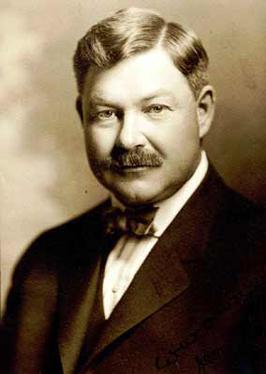William Warren Orcutt facts for kids
William Warren Orcutt (born February 14, 1869 – died 1942) was a geologist who studied oil. He is known as a very important person in finding and producing oil in California. He also helped show how geology could be used in the oil industry. William Orcutt is also famous for his work with fossils. He helped bring the amazing fossils from the La Brea Tar Pits to the attention of scientists.
Contents
William Orcutt's Life and Work
William Orcutt was born in Dodge County, Minnesota. This was on February 14, 1869. When he was 12, his family moved to Ventura, California. He went to Stanford University. In 1895, he graduated with a degree in geology and engineering.
After college, he worked as an engineer. He also worked as a United States Deputy Surveyor until 1899. That year, he joined the Union Oil Company of California. He started as a superintendent. He stayed with Unocal for a long time. He eventually became a Vice-President and a member of the company's board. He retired in 1939.
In 1901, he became the manager for geology, land, and engineering at Unocal. He then moved to Los Angeles. In 1904, Unocal asked him to create a town. This town was for the many workers needed for the growing Santa Maria oil field. This field was in Santa Barbara County, California. Orcutt did not want the town named after him. But the company insisted on calling the new town Orcutt, California.
How William Orcutt Changed the Oil Industry
Before William Orcutt, finding oil in the Western U.S. did not use much geology. His work changed this completely. He made the first geological maps of important oil fields. These included Coalinga, Lompoc, and Santa Maria. He used geology and engineering to solve problems in oil production.
Unocal became the first oil company in California to have a geology department. Because of Orcutt's efforts, using geology became a normal part of finding oil in the West. In 1923, Orcutt wrote a paper. It told the history of oil production in California. He shared this paper with the American Association of Petroleum Geologists.
Orcutt also served in the California National Guard from 1895 to 1897. He was a Reserve Engineer during World War I. During World War II, he worked on the local draft board. He did this from 1940 until he passed away in 1942.
Discovering Fossils at the La Brea Tar Pits
William Orcutt found fossils in the asphalt deposits. This happened on the Hancock Ranch. He found them shortly after moving to Los Angeles in 1901. People had mentioned fossils at the La Brea Tar Pits in science papers as early as 1875.
But it was Orcutt who collected many important fossils. These included saber-toothed cat, dire wolf, and ground sloth fossils. After he collected these, scientists truly understood how important the La Brea Tar Pits were. They learned that the pits helped explain the ancient animals and plants of North America from the late Pleistocene era. Orcutt later gave his fossil collection to John Campbell Merriam. Merriam was from the University of California.
William Orcutt's Legacy
William Orcutt played a very important role in developing the oil industry in the Western United States. Because of his work, the town of Orcutt, California is named after him. There is also a town called Orcutt, Colorado, named in his honor.
Paleontologists named an ancient coyote, Canis orcutti, after him. This was to honor his fossil discoveries at the La Brea Tar Pits.
The home, gardens, and orchards that he and his wife Mary used for vacations are also famous. This was their retirement estate in the San Fernando Valley. It was named a Los Angeles Historic-Cultural Monument. It was later given to the city of Los Angeles. Today, it is known as the Orcutt Ranch Horticulture Center.


